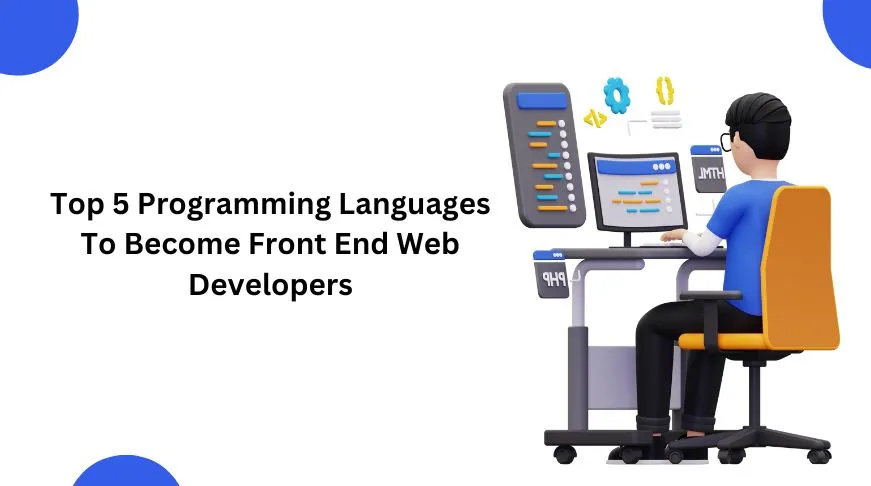
Top 5 Programming Languages To Become Front End Web Developers
Discover the five key programming languages in front-end web development and why they are vital for aspiring Front-End Web Developers. Discover the advantages and disadvantages of each language, as well as how it fits into the larger web development landscape.
There are more than hundreds of programming languages in use today. Fortunately, potential front-end web engineers only need to master a few basic languages to begin their new careers. Here are the five most important programming languages for front-end web development.
HTML
HTML is the standard language for creating documents that are viewed in a web browser. HTML tells the browser how to display data on the webpage. These instructions frequently address the page layout, fonts, colors, headings, titles, tables, and graphics. HTML5 Boilerplate is the most popular HTML framework in use nowadays.
CSS
Cascading Style Sheets (CSS) is a language that is used to style a website's text, color, buttons, and tables, as well as structure how its pages are set out. CSS separates content and formatting, allowing web pages to adapt to a variety of devices of varying sizes. The most popular CSS frameworks include Twitter Bootstrap, Tailwind CSS, Bulma, Foundation, Skeleton, UI Kit, Pure, Semantic UI, and Materialize.
Appealing websites. HTML specifies what content should appear on the website, but CSS defines all of the styles, such as font type, color, layout, and so on. Creating an inviting, fascinating website without CSS is nearly difficult.
JavaScript
JavaScript is a programming language that is used to make web pages more dynamic and interactive, hence engaging the user. For example, JavaScript can be used to play audio or video, display animations, advance through a slideshow of numerous photographs, and adjust a button's colours when a mouse hovers over it. The most popular JavaScript frameworks used in front-end web development are Vue.js, Angular, and Svelte. The most popular JavaScript library nowadays is React, which was created by Facebook.
JSX
JSX, or JavaScript XML, is a grammar extension of JavaScript used in the React package that allows programmers to arrange components using a language akin to HTML embedded within JavaScript code. JSX is commonly used to specify how a site's user interface (UI) should appear, which React subsequently converts into DOM elements. While JSX is not essential to construct React applications, it does speed up the development process by simplifying the coding language.
TypeScript
TypeScript is an open-source programming language which was developed by Microsoft in 2012. TypeScript, as a superset of JavaScript, can execute on both the front and back ends. The fundamental advantage of TypeScript is that it adds optional static typing, classes, and modules to JavaScript, allowing it to be used to build huge applications. TypeScript also enables programmers to identify common problems early in the development process, making JavaScript development more efficient.
How to Become a Front-End Developer
Enrolling in a web development boot camp is the quickest way to become a certified front-end web developer. Bootcamps are rigorous programs that prepare students for a new career in just a few months. Boot camps, with their fast timetables and skill-focused curricula, make a fantastic alternative to a standard four-year degree. You may also discover web development boot camps online to learn the skills you need without having to commute large distances.
If you want to learn more about web development but aren't ready to commit to a full boot camp, consider taking one or two live online classes. A variety of choices are available to help you get started with your programming education.
You can take web development courses on front-end languages and learn languages such as HTML, CSS, JavaScript, React, GitHub, and more.
Read More :- Top 10 AI Tools for Business: Game-Changers
Website Development: In-Depth Guide For Beginners
Posted By: Mrmmbs Vision